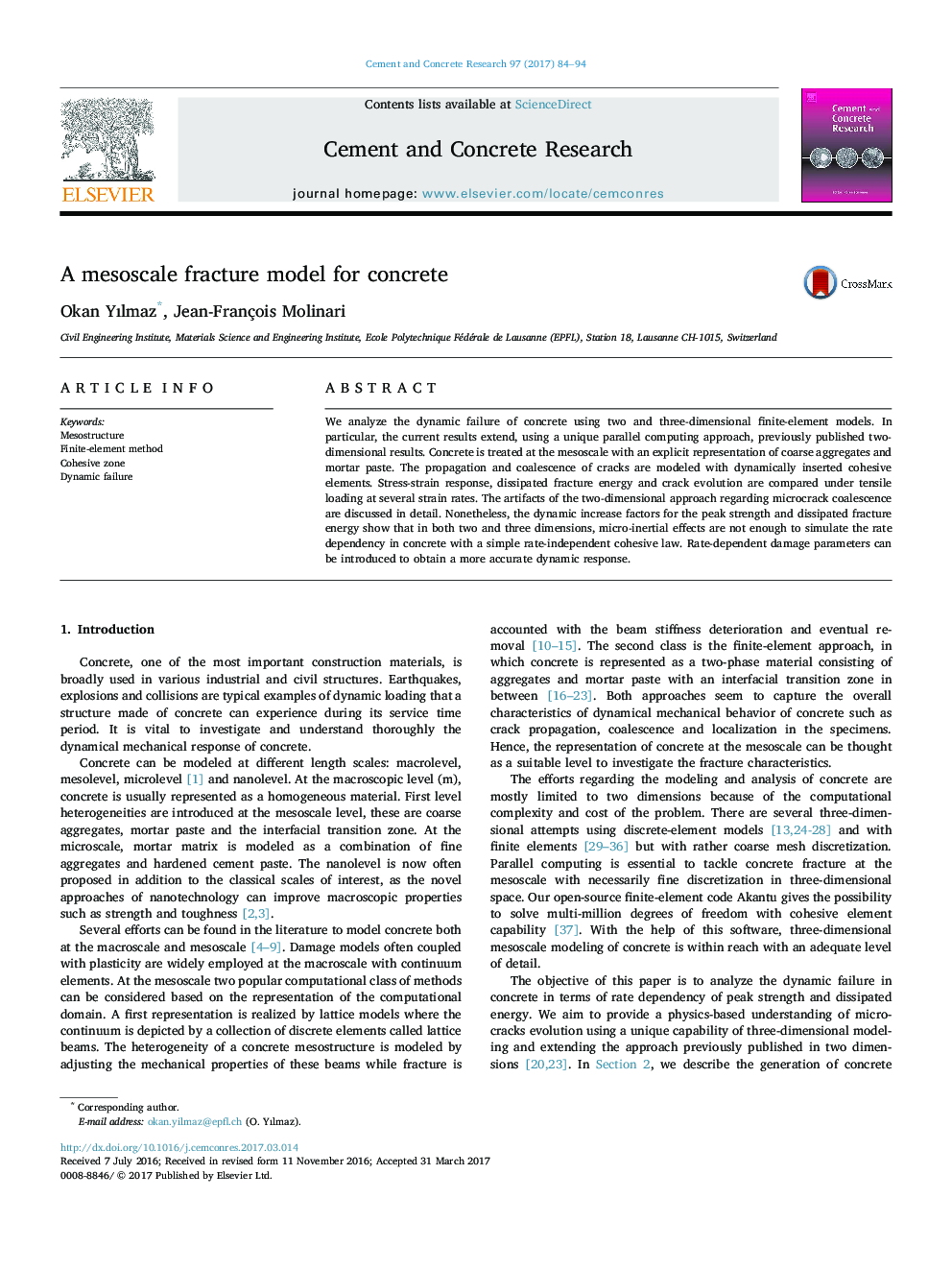| کد مقاله | کد نشریه | سال انتشار | مقاله انگلیسی | نسخه تمام متن |
|---|---|---|---|---|
| 5437171 | 1509726 | 2017 | 11 صفحه PDF | دانلود رایگان |
عنوان انگلیسی مقاله ISI
A mesoscale fracture model for concrete
ترجمه فارسی عنوان
یک مدل شکست شکنی برای بتن
دانلود مقاله + سفارش ترجمه
دانلود مقاله ISI انگلیسی
رایگان برای ایرانیان
کلمات کلیدی
ترجمه چکیده
ما تجزیه و تحلیل شکست پویا بتن با استفاده از دو و سه بعدی مدل عناصر محدود. به طور خاص، نتایج کنونی گسترش می یابد، با استفاده از رویکرد محاسبات موازی منحصر به فرد، قبلا منتشر شده نتایج دو بعدی. بتن در مقیاس ماوس با یک نمایش صریح از دانه های خشت و خمیر خمیر مورد استفاده قرار می گیرد. انتشار و همبستگی ترکها با عناصر یکپارچه قرار داده شده به صورت پویا طراحی شده است. پاسخ استرس تنش، انرژی شکست خورده و تکامل کراس در بارگیری کششی در چندین بار سویه مقایسه می شود. مصنوعات از رویکرد دو بعدی در مورد تلفیق میکروسکراسی به تفصیل بحث شده است. با این وجود، عوامل افزایش پویا برای نیروی حداکثر و انرژی شکست خورده نشان می دهد که در هر دو و سه ابعاد، اثرات میکروارگانیسم برای شبیه سازی وابستگی سرعت در بتن با یک قانون مستقل مستقل با سرعت است. پارامترهای آسیب وابسته به سرعت می توانند برای دریافت پاسخ دینامیک دقیق تر معرفی شوند.
موضوعات مرتبط
مهندسی و علوم پایه
سایر رشته های مهندسی
مهندسی صنعتی و تولید
چکیده انگلیسی
We analyze the dynamic failure of concrete using two and three-dimensional finite-element models. In particular, the current results extend, using a unique parallel computing approach, previously published two-dimensional results. Concrete is treated at the mesoscale with an explicit representation of coarse aggregates and mortar paste. The propagation and coalescence of cracks are modeled with dynamically inserted cohesive elements. Stress-strain response, dissipated fracture energy and crack evolution are compared under tensile loading at several strain rates. The artifacts of the two-dimensional approach regarding microcrack coalescence are discussed in detail. Nonetheless, the dynamic increase factors for the peak strength and dissipated fracture energy show that in both two and three dimensions, micro-inertial effects are not enough to simulate the rate dependency in concrete with a simple rate-independent cohesive law. Rate-dependent damage parameters can be introduced to obtain a more accurate dynamic response.
ناشر
Database: Elsevier - ScienceDirect (ساینس دایرکت)
Journal: Cement and Concrete Research - Volume 97, July 2017, Pages 84-94
Journal: Cement and Concrete Research - Volume 97, July 2017, Pages 84-94
نویسندگان
Okan Yılmaz, Jean-François Molinari,
